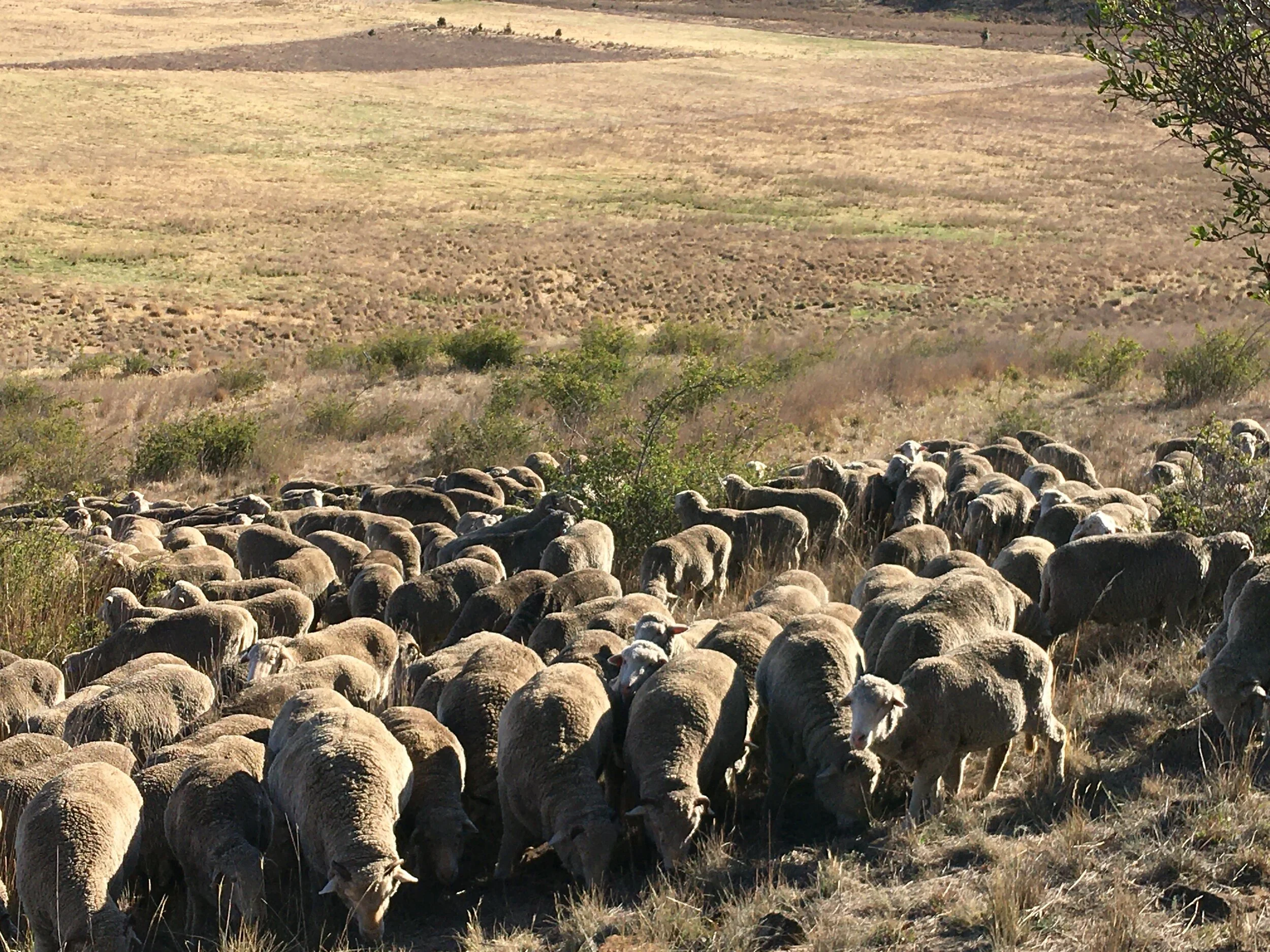My stone soup adventures a couple of weeks ago were mostly a bust, with one delightful and important exception: I relearned key subtleties of active shepherding that I’d let slide over the last few years. Chief among them: the essence of shepherding is creating the opportunity for sheep to have a sense of discovery about their food. Parents will not be surprised.
Curiosity is a powerful driver, and the chance to discover the next delicious tidbit seems to pull sheep like magnets. I’m reminded of my own childhood beach-combing days, when the lure of the next beautiful bit of driftwood or unusual shell would keep me wandering along a Baja California beach for hours.
Let me see if I can explain how I lost the nuances of shepherding, and how I imagine bringing them back to the forefront of my shepherding.
When I began actively shepherding, I modelled my circuits after those of professional shepherds in the French Alps (see Meuret and Provenza for a wonderful account), who spend the entire day on the mountain with their flock, moving from one biome (ecosystem subset) to another through the day, giving their flock not just variety but variety in a particular sequence designed to enhance milk production in their cheese-producing ewes.
While I have biomes, sort of, they are not distributed in any useful way for continuous forward grazing, and I’ve always regretted not being able to do “proper” shepherding circuits. The other deterrent for me is that I can’t shepherd all day every day and still run the rest of my business. So I made compromises, lots of them.
In the early days, though, I learned many of the subtleties that make active shepherding work, mostly centred around asking the sheep to do what they want to do anyway: walk uphill, walk into the wind, rest and ruminate after each two-hour-or-so “meal”, rest through the heat of the day.
I also taught the sheep to follow me by leading them (with gentle help from dogs at the back) through gates into especially nice forages, like lucerne. In that way I established at least some bona fides as lead sheep. And to this day, the flock will follow me through a gate if we are reasonably close—even without the dog at the back.
Elf, Vicki and Clara following me into the quarry in 2015.
Over time though, the pressure of getting other things done during the day has led me to a system that is more about placing sheep for a period of time in a (hopefully) enticing paddock, and then returning hours later or the next day to move them to the next one. While this has certainly worked in terms of nutrition, the lovely nuance of giving the sheep a sense of adventure and discovery has gradually eroded, along with my acceptance of just how slowly sheep move when they are grazing.
Which is why stone soup didn’t work very well: I tried to cover too much ground, in directions often antithetical to where the sheep wanted to go, and there wasn’t, in fact, much forage in those corners of the property that sheep would consider enticing. Everybody was hot and bothered and not well-nourished, let alone on a voyage of discovery!
Day 1 of the Stone Soup Circuit—moving up this narrow track bordered by gorse was nobody’s favourite part of the day.
So, I’m trying a return to first principles (as we physicists say): create the opportunity for curiosity to result in a sense of discovery; work with the elements of wind and slope; keep the circuits short and sweet. That’s what we did today, and it was delightful.



